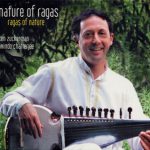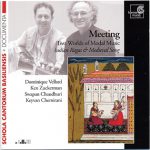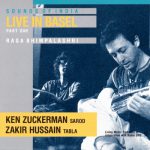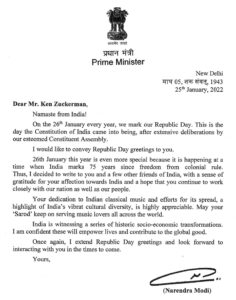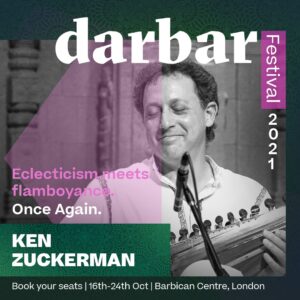The following is an excerpt of two articles that can be found in publications from Amadeus Verlag / Winterthur:
German version – “Improvisation in der mittelalterlichen Musik”, Basler Jahrbuch Historische Musikpraxis Basel / 1984
English version – “Improvisation in Medieval Music”, Improvisation Winterthur / 1995
Recent research has shown that improvisation played an important role in Medieval music. The study of both theoretical treatises and the music sources themselves, indicates an extensive non-written, improvised tradition, existing alongside the composed, written repertoire. In particular, the 14th-century instrumental collections of estampies and istampitas give us a diverse and instructive glimpse into the medieval world of mode and improvisation. In showing a very consistent conception of modal composition and a diverse employment of improvised structures, they invite us to expand our understanding of the medieval art of melody making.
In attempting to recreate the practice and pedagogy of medieval improvisation, it has been necessary to re-evaluate many of the basic conceptions that have become deeply ingrained in the world of Western classical music education and performance. This has not only involved a different look at the basic materials — i.e. notation, compositions, etc. — but also a look to other musical cultures. In particular, the strictly controlled practice of modal improvisation in North India has provided important clues as to how an extensive unwritten repertoire can evolve.
In addition, it is necessary to take a closer look at the elusive term “improvisation”. Although it is a common word, used to describe a variety of experiences in our everyday lives, its specific meaning in relation to music is often times vague and invites misunderstandings in both musicians and listeners alike. This is easy to understand once we realize that although some aspects of improvisation can be analyzed and quantified, much of the essence of both its internal workings and external “charm” remain, if not completely subjective, at least very personal and rather difficult to put into words. Musicians sometimes describe the process as being mysterious, unconscious, spontaneous, and many are not quite sure why it is sometimes effortless, other times difficult, and in any case, impossible to maintain for extended periods. But on the other hand, almost all musicians acknowledge that it requires a long and extensive practice in order to become a fluent and intelligent improviser. And in general, although some western musicians have had experience with improvisation, it remains nevertheless on the fringe of western music practice and education. This is easy enough to understand since there is little place for it in most all of the repertoire a classically trained musician ever performs. But in the field of early music, where improvisation is know to have played a much larger role, the lack of knowledge and experience is felt much more acutely. Thus the questions emerge, What was the nature of improvisation in earlier times? How were musicians trained in this art? and, Can one ever hope to incorporate this “spontaneous” practice into the “reconstruction” of medieval music?
One of the first things we notice about the teaching of music in eastern cultures is the importance of the teacher. The transmission of music in unwritten, improvised traditions is completely dependent on a close and long-term relationship between the teacher and student. The teachers’ role is not only to instruct in technique, interpretation, composition and improvisation, but also to literally pass on an entire repertoire to the student, without relying on written materials. Thus it is not uncommon in a tradition like classical Indian music, for an apprenticeship to last for over 20 years! The nature of this kind of long-term relationship demands a student to make many adjustments in attitude, not the least of which is a sense of patience that in order to learn the repertoire and become a master of improvisation, it is necessary to spend many years of training, carefully following the example of the teacher.
Another problematic aspect of this kind of music training is the necessity of learning all of the music by ear and retaining one’s entire repertoire in the memory. This is something particularly difficult for us to accept, coming from a tradition where even a performance repeated numerous times is usually not memorized. And this is also an excellent example of an idea which cannot be understood at all without experiencing. For until one learns a large amount of music by ear, and at the same time, commits it to memory, it is impossible to imagine having instant access to so much material while improvising. Even using the somewhat crude example of the computer can illustrate this. Anyone who has had experience with these machines knows how fast the internal memory of a computer functions, as opposed to how much slower it is when one has to put in a separate diskette for each file. In the same way it is easy to imagine how much faster one could access an entire repertoire if it was in the internal memory (the brain) instead of on diskettes (music notation). Even many students of Indian music rely extensively on written notations and in general do not memorize half the compositions which are taught to them. The teacher, while not expressly forbidding the taking of notes, often gives warnings about the consequences of this practice. “Very good! Now after ten years your notebooks are full of thousands of compositions I have given you. But what do you really know? Remember, you can’t bring your books with you onto the concert stage.” My experience of the truth of this statement has left me with the conviction that without learning a given repertoire in this way, it is useless to think that one can develop the ability to improvise fluently and spontaneously in it. For those taking up a study of early music, this is a difficult prerequisite to accept, especially for those who have already received an extensive training in western music.
One of the most difficult problems that faces a western student wanting to learn music in the “classroom of the east”, is the unwillingness to accept the limits of the participation of the intellect during the training. This is not to suggest that a mature player does not think at all when he improvises. On the contrary, there is an important place for active thought while improvising and composing in the moment. However, there is a general tendency for us in the “western world” to over-analyze and to attempt to understand aspects of music making with the intellect which must be first understood at other levels, such as the motor centers and emotions. It is a curious contradiction. On the one hand, we don’t seem to mind at all giving a child all the time he or she needs to learn to walk and run without any intellectual instructions, nor does the child ask for any. On the other hand, when it comes to a beginner in music, whatever his or her age, we insist on explaining many things which can only be understood and executed after much practice. Not only does this intellectual approach actually slow the more important process of intuitive and automatic learning, but it interferes with the students’ developing higher levels of listening and observation. Especially at more advanced levels of learning, it is precisely the moment of not understanding which should sharpen the students’ power of listening and observation – and not simply the impulse to formulate another question. My teacher has struggled with this characteristic in his students for years. At one point, in his usual way of “improvising” analogies to get a point across, he said: “It is really so simple. Why all this talk? When you eat, you eat. When you sleep, you sleep. So – when you learn music, learn music! Why talk?” For most of us, these true, simple and practical words are very difficult to put into practice.
The understanding of mode may be the most important single skill for a musician learning to improvise in Medieval music. It is also an area which is most often completely lacking in the training of musicians today. Although there is an extensive literature in which mode plays an important role, we have very few indications of how mode and modal improvisation was taught during the Middle Ages.
(…)
In Indian music thousands of modal frameworks exist under the general term raga. Many times there are a large number of ragas which share the same “parent” scale – like dorian – but each one has its own distinct identity and rules for composition and improvisation.
(…)
One of the most serious problems in improvising medieval or for that matter, any music, is that the basic rhythmic and melodic building blocks are not an integral part of the musical consciousness. All of these elements must be second nature – automatic, so to speak. If the mind must be concerned with all these small details, then it cannot be free to listen and develop a larger structure. This phenomenon can be compared to language: if we try to think separately of every word as we are speaking, we experience how difficult it becomes to keep a larger concept clearly in mind. Further, if we had to be aware of every single letter of each word, it would be practically impossible to recite a sentence, let alone improvise the re-telling of a story! For a musician trying to improvise in the medieval style today, the problem is extreme. Not only is he cut off from the roots of the style, but often times he has already been exposed to and performed in repertoires as diverse as those of the renaissance, baroque, classic, romantic, avant-garde, pop, rock, etc. When it comes time to improvise, all of these styles and formulas tend to get mixed up and the resulting improvisation has no identity at all!
(…)
On the subject of permutations, there are an almost endless number of ways to approach the multi-faceted subject of improvisation – stylistic, psychological, motor, aesthetic, etc. This variety is in fact, quite in tune with the subject itself! What has been intended here is an introduction to an approach developed somewhat by chance – an encounter between one musicians’ general fascination with the subject of improvisation, and his specific investigations into the musical worlds of India and that of the Middle Ages.
Kenneth Zuckerman
February, 1994 Basel

